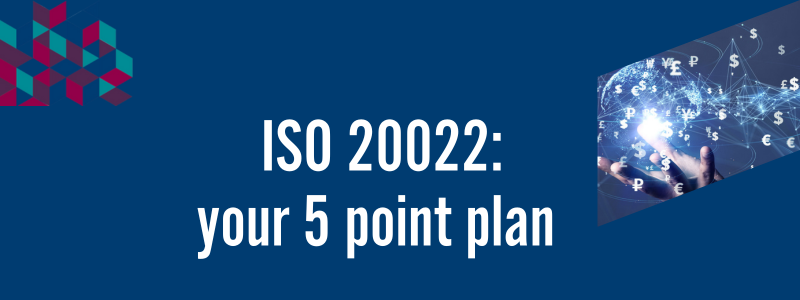

Financial market infrastructures, such as CHAPS and TARGET2 as well as the global financial messaging system SWIFT, have begun to migrate to the globally recognised message standard ISO 20022 XML and this will continue across the globe throughout 2024 and 2025. As this takes place, corporates can begin to reap the benefits of improved interoperability, data structure and quality, efficiency, forecasting and transparency across their payments.
But to realise these benefits, your organisation needs to be prepared. The banking industry’s focus has been on the ability to settle payments in the interbank space, but this focus is now turning towards enhancing customer channels and information services, hence making the ISO 20022 messaging standard live for both payables and receivables. Here are five ways corporates can kick-start their preparations for ISO 20022:
1. Evaluate the impact: ISO 20022 introduces significant changes to financial messaging. Work out how these changes will impact your current systems and processes, including your treasury management systems (TMS), payment platforms, and enterprise resource planning (ERP) systems. Are any planned system changes across the organisation taking account of the new standard? Are systems ‘ISO-native’ and if not, can they be tactically ready?
2. Understand the business benefits: by adopting early, your organisation could gain a competitive advantage. Richer and more structured data can enable more straight-through processing – reducing friction, accelerating payments through the eco-system, improving reconciliation and improving the overall payment experience for customers and suppliers.
3. Check your data: ISO 20022 is all about getting the right data in the right place – it introduces new data fields and structures. Check your existing data sources, such as your master vendor list, and map the fields to the new standard. Also, find out about the new purpose codes and legal entity identifiers (LEIs) as some sectors will need to adopt these ahead of others.
4. Test and train: implementation will require thorough testing to ensure seamless integration with your financial partners and identify any issues. Establish a comprehensive testing plan that covers both internal and external systems. At the same time, train your organisation’s staff – they will be keen to learn about the new standards and their business benefits.
5. Make time to talk: speak to your banking partners and other financial service providers to understand adoption timelines, migration plans and switch-off deadlines. But don’t stop there – talk to your systems providers to ensure that they are ahead with their own planning. And let your customers and suppliers know about the changes as well.
With the right strategy in place, you can plan how and when your organisation is able to take advantage of the new capabilities on offer.
Timeline for ISO 20022 implementation


Barclays Bank PLC is registered in England (Company No. 1026167) with its registered office at 1 Churchill Place, London E14 5HP. Barclays Bank PLC is authorised by the Prudential Regulation Authority, and regulated by the Financial Conduct Authority (Financial Services Register No. 122702) and the Prudential Regulation Authority. Barclays is a trading name and trade mark of Barclays PLC and its subsidiaries. Find out about the Financial Services Register.
